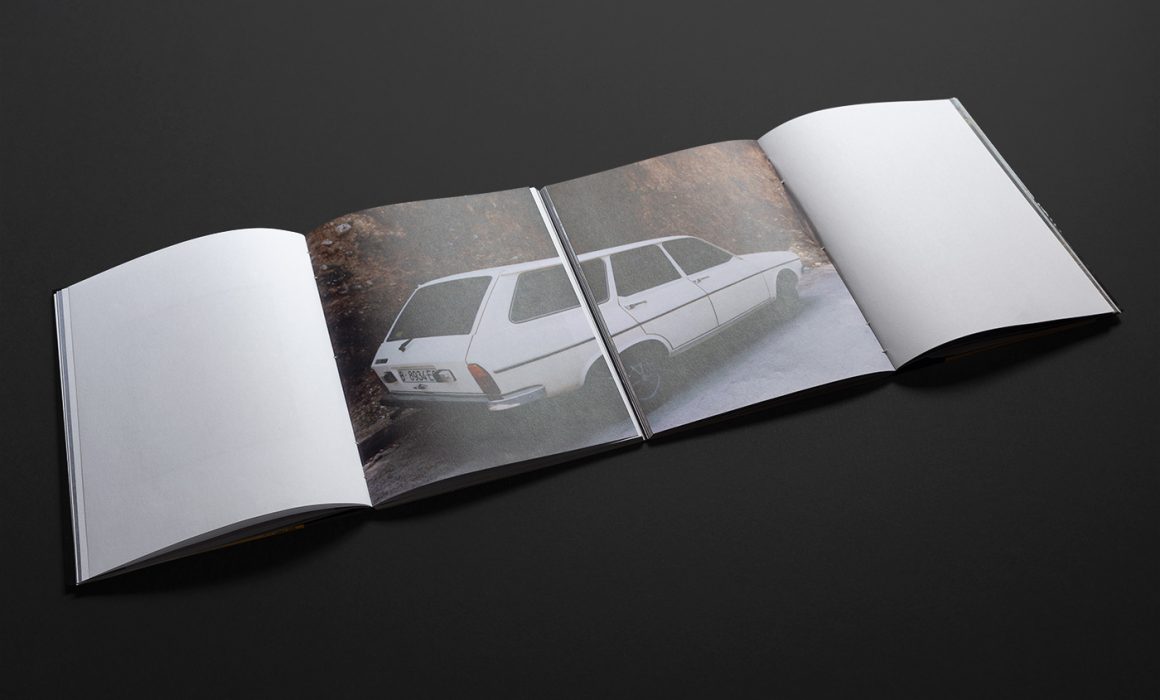Some ideas on design of a photobook
After we discussed the editing and sequencing processes the next step would be to create a photobook dummy. A handmade book that would look as similar as the book we imagine. There are many things to consider as we enter the graphic design world, it carries its own language, and it can be complicated at times. But I find it fascinating and enchanting.
First, I would seriously advice to start working with a designer. There is this world of graphic design that photographers often don’t take as seriously as it should be taken. The truth is that it is a different language, and we might know something… but as we might know something we may not know a lot of other stuff, so we can’t use the tools properly, right? It is very important to understand that graphic design is not about adding some design tools for book to look cooler but is about actually telling the story properly in a physical form. Another reason to work with a designer is that they think straight about the budget, if the budget is low, most of the expensive solutions will be excluded in the beginning and there won’t be any waste of time. When it comes to design you always need to make compromises in terms of the budget and solutions in favor of the book.
For my project I worked with Valentina who is truly incredible, she looked and listened attentively to my approach to this project and proposed solutions that I never even considered. Especially with the layout, I have to say I didn’t have many ideas; I like things clean and clear. Valentina proposed me some beautiful ideas how to keep the layout in line with the concept and set the images on movement which was quite miraculous. On the other hand, there were other design solutions that we almost didn’t need to discuss because they were quite clear to both of us from the very beginning. I knew very soon that I wanted to use swiss binding for this project, it felt right for the concept of the project. The more I thought about it the more it felt in favor of the book. Valentina agreed so we didn’t use a lot of time to make this decision and moved on with others.
So how do we decide what is right for our project? If there is one thing I can advise here, I would say start with looking at photobooks. Many different photobooks. Especially nominated or which won awards or are recognized in the photobooks community. Observe. Not in the way “I like this” or “I don’t like this”; try to approach a photobook in an analytical way, try to observe and question: why this project comes in this form? What does it say? How does the design support this work? It taught me a lot in the past and it still does. We may not find all the answers, at least not in the beginning. But it’s absolutely worth to try. And don’t rush, photobooks unravel themselves slowly and with time, so no need to hurry. Enjoy it.
Kelios idejos apie fotoknyge dizaina
Aptarus redagavimo ir sekos kūrimo etapus, sekantis žingsnis yra sukurti knygos maketą. Rankų darbo knygą, kuri atrodytų taip pat, kaip ir mūsų įsivaizduojama knyga. Įžengus į grafinio dizaino pasaulį, reikia atsižvelgti į daugelį dalykų. Šis pasaulis turi savo kalbą ir kartais gali būti sudėtingas tačiau be galo žavus ir tikrai įtraukiantis.
Visų pirma, patarčiau bendradarbiauti su dizaineriu. Fotografai dažnai rimtai neatsižvelgia į grafinį dizainą, taip kaip vertėtų. Tiesa yra ta, kad grafinio dizaino pasaulis tarsi kita kalba, ir nors mes galime šiek tiek ją pažinoti, tačiau galbūt nežinome daugelio kitų, svarbių dalykų, todėl negalime tinkamai naudotis kalbos teikiamais įrankiais, tiesa? Labai svarbu suprasti, kad grafinis dizainas nėra naudojamas, norint, kad knyga atrodytų gražesnė. Grafinis dizainas reikalingas užtikrinti adekvatų istorijos pasakojimą pritaikytą būtent tai istorijai atsiskleisti jai tinkamiausiu būdu. Kita priežastis bendradarbiauti su dizaineriu yra ta, kad jie nuo pat pradžių galvoja apie biudžetą: jei biudžetas mažas, dauguma brangių sprendimų atmetami nuo pat pradžių ir nebus veltui švaistomas laikas. Kalbant apie dizainą, visada reikia ieškoti kompromisų tarp biudžeto ir sprendimų knygos naudai.
Kurdama savo projektą, dirbau su Valentina, kuri yra tiesiog nuostabi. Valentina įsigilino į mano požiūrį ir puikiai įsiklausė, suvokė knygos esmę bei pasiūlė sprendimus, kurių pati net nebuvau svarsčiusi. Ypač kalbant apie fotografijų išdėstymą erdvėje, turiu pripažinti, neturėjau daug idėjų – man patinka „švarūs“ ir aiškūs dalykai. Valentina pasiūlė keletą puikių idėjų, kaip išlaikyti koncepciją atitinkantį išdėstymą ir parinkti fotografijų seką, tai buvo nuostabi pagalba. Kita vertus, buvo ir kitų dizaino sprendimų, kurių mums beveik nereikėjo aptarti, nes jie buvo akivaizdūs mums abiem nuo pat pradžių. Labai greitai supratau, kad šiam projektui noriu naudoti šveicarišką įrišimą – jis atrodė tinkamas projekto koncepcijai. Kuo daugiau apie tai galvojau, tuo stipriau įsitikinau, kad tai yra teisingas variantas mano fotografijos knygai. Valentina sutiko, todėl mes nesugaišome daug laiko šiam sprendimui priimti ir judėjome toliau.
Taigi kaip nuspręsti, kas tinka kuriamam projektui? Jei galėčiau patarti, sakyčiau, pradėkite nuo fotografijos knygų peržiūros. Peržiūrėkite daug įvairių knygų. Ypač tas, kurios buvo nominuotos arba laimėjo apdovanojimų ar yra pripažintos fotografijos knygų kūrėjų bendruomenėje. Stebėkite. Ne „man patinka“ arba „man nepatinka“ būdu; verčiau pamėginkite pasitelkti analizę, pamėginkite stebėti ir paklausti: kodėl šis projektas yra pateiktas būtent taip? Ką tai sako? Kaip šis dizainas padeda atsiskleisti knygai? Šis požiūris mane daug ko išmokė praeityje ir vis dar moko. Galbūt nerasime visų atsakymų, bent jau pradžioje. Tačiau pamėginti tikrai verta. Ir neskubėkite – fotografijos knygos atsiskleidžia savu laiku. Pasimėgaukite procesu.
